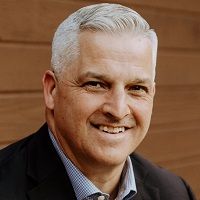Three Strategies to Cut Your Taxes in Retirement
All that money in your tax-deferred retirement accounts? Uncle Sam is going to want his cut, so here's how to prepare for that.


Retirees keeping an attentive eye on their finances often concentrate, as you might expect, on how well their investments are doing. Return on investment is important, certainly, but something else can have an even bigger impact on retirement portfolios: income taxes, one of the biggest expenses for many retirees.
That surprises a lot of people, especially those who anticipate their tax bill will go down once they stop working. Unfortunately, Uncle Sam is just as interested in you in retirement as he was in your working years — in some ways even more so.
Often, a good chunk of retirement savings is in tax-deferred accounts, such as traditional IRAs or 401(k)s. The IRS allowed you to make contributions to those accounts over the years without paying taxes on that income.
From just $107.88 $24.99 for Kiplinger Personal Finance
Become a smarter, better informed investor. Subscribe from just $107.88 $24.99, plus get up to 4 Special Issues

Sign up for Kiplinger’s Free Newsletters
Profit and prosper with the best of expert advice on investing, taxes, retirement, personal finance and more - straight to your e-mail.
Profit and prosper with the best of expert advice - straight to your e-mail.
Eventually, though, the “deferred” part of “tax-deferred” comes into play, and the IRS wants the money you postponed paying. When you retire and start withdrawing money from those accounts to live on, the withdrawals are taxed as income. Plus, when you hit age 73, required minimum distributions (RMDs) kick in, and the federal government requires you to withdraw a certain percentage each year, whether you want to or not. As you can see, there comes a point where the IRS loses patience with waiting for its money.
Why tax-efficient strategies are important
RMDs are just one of the many reasons tax-efficient strategies should be a significant part of your financial planning. Sadly, for many people, this doesn’t happen at all. Or, if it does happen, it may consist almost entirely of tax-loss harvesting, a strategy that consists of reviewing investments at the end of the year with an eye on the winners and losers. The idea is to sell stock that is worth less than when you paid for it. The loss you take can help offset gains you made with other investments, reducing your overall tax bill.
It’s a strategy that works well for some people, but one strategy put into action at the end of the year hardly constitutes a tax-efficient strategy. Ideally, this happens year-round as you and your financial adviser stay aware of the tax implications of all your financial moves and are always on the lookout for opportunities to pay less to Uncle Sam and keep more in your pocket.
What might such strategies include? Here are a few examples:
1. Setting up a qualified charitable distribution.
This strategy, commonly referred to as a QCD, goes hand-in-hand with RMDs. Here’s how it works: When you withdraw money from an IRA, instead of moving the money into a personal account, you can transfer the funds directly to a nonprofit or a church. In that case, the money is not taxed. You keep your tax bill lower, while at the same time contributing to a favorite cause. A bonus is: You don’t have to itemize deductions to take advantage of the QCD.
Even if you use the standard deduction, the option is there. QCDs do come with rules, including you must be at least 70½ years old, so it’s important to understand the details. A financial professional who has worked with QCDs can help you find your way around any difficulties.
2. Making Roth conversions.
Roth conversions have become one of the most popular ways to lower your future tax bills. The conversion involves moving your money from a tax-deferred account, such as a traditional IRA or 401(k), to a Roth IRA. The money is taxed when you make the conversion, but it then grows tax-free. When you make withdrawals in retirement, you pay no taxes.
One misconception people have is if they are in the highest tax bracket — 37% — then it doesn’t make sense to consider a Roth because the taxes on the transfer would be too high. But the conversion can still pay off, even in the higher tax bracket. Plus, for those who don’t anticipate that they will need to spend the money in the IRA, a Roth is a more tax-efficient way to leave a legacy to your beneficiaries than a traditional IRA.
3. Preparing for a potential tax increase in less than two years.
While some people hope their tax bill will drop in retirement, we all could be looking at higher taxes in less than two years. That is because the Tax Cuts and Jobs Act of 2017 expires at the end of 2025. Unless Congress passes legislation to change things, the tax brackets are scheduled to go up as of January 1, 2026, returning to where they were before the act was passed.
Right now, many people aren’t paying attention to that looming jolt to their tax bill, but they could be in for a rude awakening. The return of tax brackets to their pre-2017 level is one more important reason why tax-efficient strategies are needed. QCDs and Roth conversions can help, but there are other strategies to consider as you get ready for 2026.
The main thing, though, is to be aware of the pending increase and to have a plan in place to try to counteract it.
As you can see, planning for taxes can be even more important than the rate of return on your money. You don’t want to grow your money only to see Uncle Sam arrive with oversized pruning shears to snip that growth away.
The good news is you don’t have to do your planning alone. A financial professional with a good understanding of taxes can help you plot a course of action that will work best for your needs — and keep your tax bill as low as possible in the process.
Ronnie Blair contributed to this article.
The appearances in Kiplinger were obtained through a PR program. The columnist received assistance from a public relations firm in preparing this piece for submission to Kiplinger.com. Kiplinger was not compensated in any way.
Investment advisory products and services made available through AE Wealth Management, LLC (AEWM), a Registered Investment Adviser. Please remember that converting an employer plan account to a Roth IRA is a taxable event. Increased taxable income from the Roth IRA conversion may have several consequences. Be sure to consult with a qualified tax advisor before making any decisions regarding your IRA. Neither the firm nor its agents or representatives may give tax or legal advice. Individuals should consult with a qualified professional for guidance before making any purchasing decisions. 2446435 07/24
Related Content
- 13 States That Don't Tax Retirement Income
- How the IRS Taxes Retirement Income
- Calculating Taxes on Social Security Benefits
- How Many Retirement ‘Tax Buckets’ Do You Have?
- Six Tax Breaks That Get Better With Age
Profit and prosper with the best of Kiplinger's advice on investing, taxes, retirement, personal finance and much more. Delivered daily. Enter your email in the box and click Sign Me Up.

Michael Miller, a financial adviser with Endependence Financial, has dedicated his career to guiding clients through the complexities of financial planning. His education and background as a financial adviser equipped him with the knowledge to address a wide range of financial issues. He can offer both insurance and investment products and services. He has obtained his series 65 and 66 licenses and has a master’s degree in finance.
-
 Dow Adds 646 Points, Hits New Highs: Stock Market Today
Dow Adds 646 Points, Hits New Highs: Stock Market TodayIt was "boom" for the Dow but "bust" for the Nasdaq following a December Fed meeting that was less hawkish than expected.
-
 5 Types of Gifts the IRS Won’t Tax: Even If They’re Big
5 Types of Gifts the IRS Won’t Tax: Even If They’re BigGift Tax Several categories of gifts don’t count toward annual gift tax limits. Here's what you need to know.
-
 The 'Scrooge' Strategy: How to Turn Your Old Junk Into a Tax Deduction
The 'Scrooge' Strategy: How to Turn Your Old Junk Into a Tax DeductionTax Deductions We break down the IRS rules for non-cash charitable contributions. Plus, here's a handy checklist before you donate to charity this year.
-
 I'm a Tax Attorney: These Are the Year-End Tax Moves You Can't Afford to Miss
I'm a Tax Attorney: These Are the Year-End Tax Moves You Can't Afford to MissDon't miss out on this prime time to maximize contributions to your retirement accounts, do Roth conversions and capture investment gains.
-
 I'm an Investment Adviser: This Is the Tax Diversification Strategy You Need for Your Retirement Income
I'm an Investment Adviser: This Is the Tax Diversification Strategy You Need for Your Retirement IncomeSpreading savings across three "tax buckets" — pretax, Roth and taxable — can help give retirees the flexibility to control when and how much taxes they pay.
-
 Could an Annuity Be Your Retirement Safety Net? 4 Key Considerations
Could an Annuity Be Your Retirement Safety Net? 4 Key ConsiderationsMore people are considering annuities to achieve tax-deferred growth and guaranteed income, but deciding if they are right for you depends on these key factors.
-
 I'm a Financial Pro: Older Taxpayers Really Won't Want to Miss Out on This Hefty (Temporary) Tax Break
I'm a Financial Pro: Older Taxpayers Really Won't Want to Miss Out on This Hefty (Temporary) Tax BreakIf you're age 65 or older, you can claim a "bonus" tax deduction of up to $6,000 through 2028 that can be stacked on top of other deductions.
-
 Meet the World's Unluckiest — Not to Mention Entitled — Porch Pirate
Meet the World's Unluckiest — Not to Mention Entitled — Porch PirateThis teen swiped a booby-trapped package that showered him with glitter, and then he hurt his wrist while fleeing. This is why no lawyer will represent him.
-
 Smart Business: How Community Engagement Can Help Fuel Growth
Smart Business: How Community Engagement Can Help Fuel GrowthAs a financial professional, you can strengthen your brand while making a difference in your community. See how these pros turned community spirit into growth.
-
 In 2026, the Human Touch Will Be the Differentiator for Financial Advisers
In 2026, the Human Touch Will Be the Differentiator for Financial AdvisersAdvisers who leverage innovative technology to streamline tasks and combat a talent shortage can then prioritize the irreplaceable human touch and empathy.
-
 How Financial Advisers Can Deliver a True Family Office Experience
How Financial Advisers Can Deliver a True Family Office ExperienceThe family office model is no longer just for the ultra-wealthy. Advisory firms will need to ensure they have the talent and the tech to serve their clients.